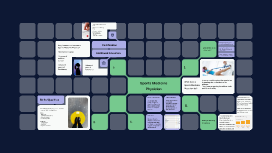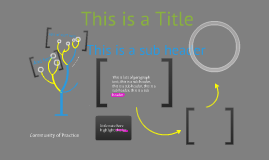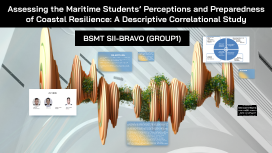Minimalist Dark Grey
Transcript: Graphic Design Trends In graphic design, a dark grey palette is used to convey professionalism and clarity. This color helps to enhance readability and focus within layouts, especially in digital platforms, allowing designs to appear sleek and contemporary. Fashion Design Influence Interior Design Impact Functional Simplicity Characteristics of Dark Grey Minimalism Functional simplicity in dark grey minimalism prioritizes utility without unnecessary complexity. Designs utilizing dark grey allow essential features to stand out, enhancing usability and making spaces more efficient, thus embodying the minimalist ethos. Fashion industry trends have embraced minimalist dark grey for its versatility and timelessness. Designers often incorporate this hue in collections, providing a neutral base that accentuates other colors while exuding elegance and style. Dark grey serves as a powerful foundation in minimalist design, symbolizing sophistication and neutrality. Its unique qualities enhance the simplicity of design elements, creating environments that are both calming and visually striking. Minimalist dark grey is a prevailing choice in interior design, promoting a spacious feel and sophistication. This color fosters tranquility and can effectively highlight architectural features and furnishings, creating a cohesive, modern environment. Aesthetic Appeal Color Psychology Exploring the Aesthetics of Minimalism Dark grey enhances aesthetic appeal through its versatility and understated elegance. It provides a striking contrast with lighter colors and textures, enabling a harmonious balance that is both inviting and modern, emphasizing minimalist principles. The color grey, particularly dark grey, evokes feelings of balance and calmness. It is often associated with professionalism, neutrality, and sophistication, making it a preferred choice in minimalist aesthetics, where it grounds other more vibrant elements. Applications in Design The minimalist dark grey aesthetic finds versatile applications across various design fields, manifesting a sense of calm and simplicity. This section emphasizes its impact in interior, graphic, and fashion design, showcasing how this palette enhances functionality and aesthetics. Minimalist Dark Grey Importance in Design Historical Context Minimalism is vital in design as it enhances user experience by reducing visual clutter and distractions. This leads to greater functionality and better engagement with the designed objects or spaces, establishing a purposeful use of materials and forms. Originating from the late 1950s, minimalism emerged as a response to the complexity and excess of abstract expressionism. Influential artists and designers, such as Donald Judd and Yves Saint Laurent, played key roles in popularizing minimalist aesthetics across various disciplines. Timelessness Minimalist designs demonstrate a timeless quality, transcending trends. The emphasis on functionality and simplicity allows these styles to endure, ensuring continued relevance and appeal in a rapidly changing world. Benefits of Minimalism Definition of Minimalism Minimalism emphasizes the concept of 'less is more,' stripping away unnecessary components to highlight essential features. This approach fosters an environment of serenity, promoting functionality and a cleaner, more organized space. Minimalism offers numerous advantages, including enhanced clarity and focus, reduced distractions, and a timeless aesthetic. By simplifying spaces and design, individuals can foster environments conducive to productivity and tranquility. Reduced Distractions Clarity and Focus A minimalist approach reduces environmental noise by limiting unnecessary details. Simplified settings create an atmosphere where individuals can focus on their activities, minimizing interruptions and supporting mindfulness. Minimalism prioritizes essential elements, eliminating visual clutter. This concentration on fewer design components promotes mental clarity and helps individuals concentrate on tasks without overwhelming distractions, leading to greater productivity. Introduction to Minimalism Minimalism is an art and design movement characterized by simplicity, using only essential elements to create functional and aesthetically pleasing environments. Its roots can be traced back to various artistic expressions, challenging complex forms and focusing on clarity and efficiency. Summary of Key Points Minimalism emphasizes simplicity, functionality, and aesthetics. Dark grey serves as a versatile color that enhances visual clarity while maintaining an air of elegance in various design applications. Conclusion and Future Trends The culmination of minimalist dark grey designs showcases a powerful balance of simplicity and sophistication. Understanding the key points leads to insights on future developments in minimalism. Final Thoughts Emerging Trends Minimalist dark grey design is not just a trend but a philosophy that promotes clarity and

















